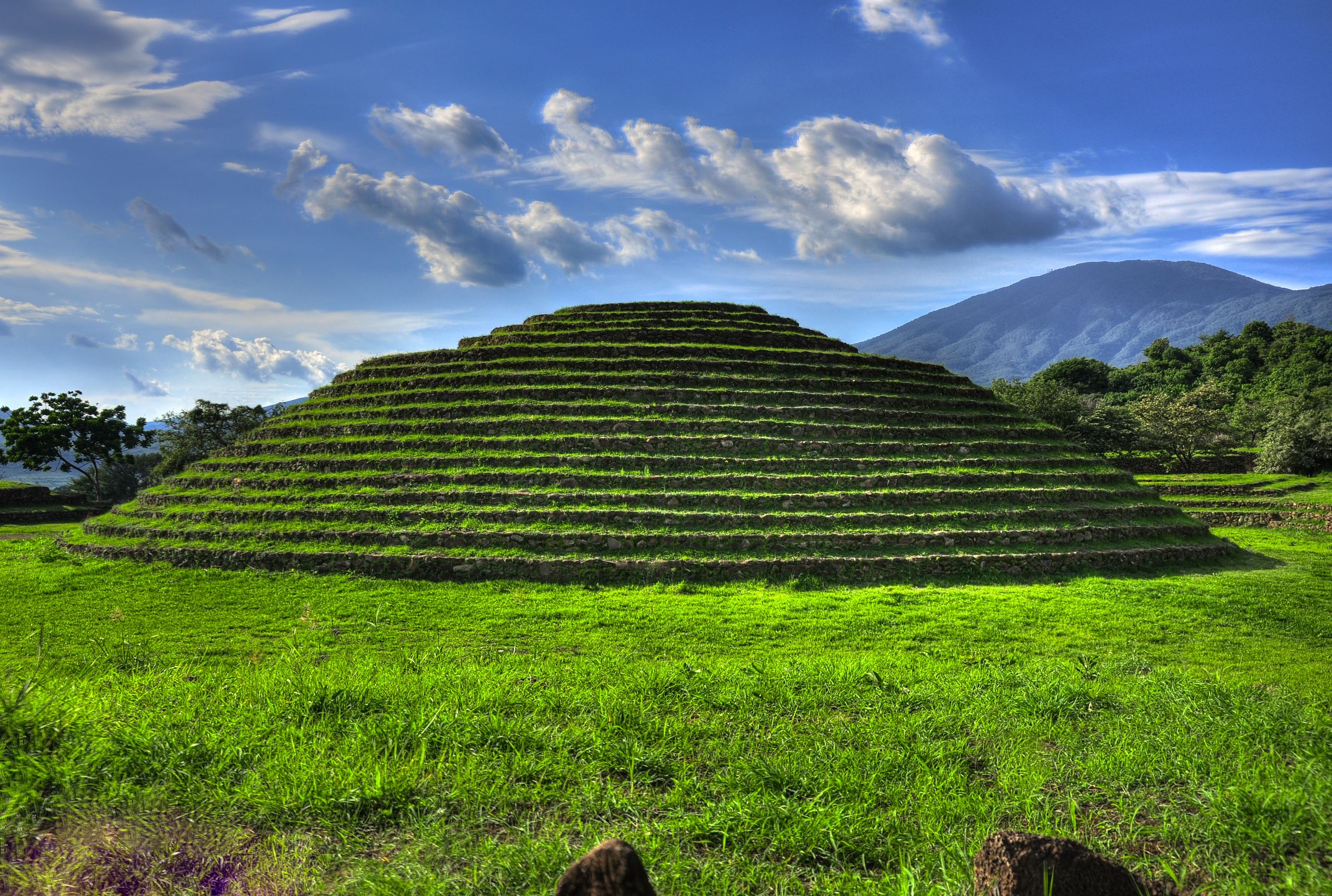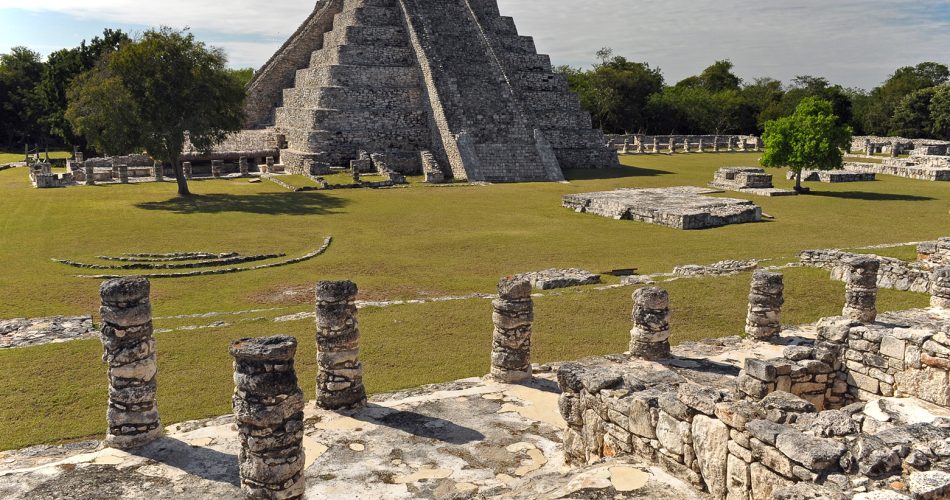Mayapan, often overshadowed by the more famous Chichen Itza, is an important archaeological site that reveals the culture and daily life of the ancient Maya. Located in the “heart” of the Yucatán Peninsula, about 40 kilometers southeast of Mérida, this Pre-Columbian city was the political and cultural center of the Maya from the 1220s to the 1440s. The Temple of Kukulcán, Mayapan’s main pyramid, is one of the many impressive structures that give us a glimpse into the city’s rich past.
Today, we explore Mayapan, its history, and most importantly, its fascinating pyramids.
Mayapan – The Last Capital of the Maya
Mayapan was the last capital of the Maya before the arrival of the Spanish conquistadors. Founded after the decline of Chichen Itza, Mayapan became the main hub of the Maya during the Late Post-Classic period, with a population of around 15,000 to 17,000 people at its peak. What makes this ancient city really interesting is that it was surrounded by defensive walls, containing over 4,000 structures, with more dwellings outside the walls. Unlike Chichen Itza, which had a cosmopolitan atmosphere, Mayapan is often seen as a more traditional center, yet it remained a key place for Maya art, culture, and politics for over two centuries.
As many other ancient Maya cities, this one too was well-planned, with clusters of temples, administrative buildings, and homes, all connected by open plazas that were used for gatherings and ceremonies. While much of Mayapan is now in ruins, the remaining pyramids still show the architectural skills of the Maya and highlight their cultural and spiritual priorities.
The Pyramid of Mayapan
The most iconic structure in Mayapan is the Temple of Kukulcán, a smaller yet striking version of the famous pyramid at Chichen Itza. Standing in the heart of the city, this pyramid was central to religious rituals and the worship of Kukulcán—the feathered serpent deity who represented the connection between the heavens, earth, and underworld.
The Temple of Kukulcán in Mayapan served as both a spiritual center and a demonstration of the city’s connection to cosmic order, with its alignment carefully planned to coincide with celestial events.
Although smaller than other Maya cities, the pyramids of Mayapan are still significant. They symbolize the people’s devotion and their expertise in astronomy and architecture. These pyramids were not only places of worship but also important markers of time. The alignment of the Temple of Kukulcán, for example, allows for a unique visual effect during the equinoxes, when sunlight and shadow create the illusion of a serpent descending the pyramid’s steps. This ties the temple to Maya cosmology and shows their deep understanding of the natural world.
The Role of Mayapan’s Pyramids
The pyramid and pyramidal structures at Mayapan are key to understanding the social, cultural, and spiritual life of the Late Post-Classic Maya. Unlike Chichen Itza, which was abandoned due to political upheaval, Mayapan remained a place of continuity and tradition. The pyramid and its temples were the heart of this continuity, where ceremonies, offerings, and rituals brought the people together and connected them with their gods.

La Iguana Circular Pyramid. Wikimedia Commons.

A panorama of Mayapan. Wikimedia Commons.
Excavations at Mayapan have uncovered artifacts, altars, and murals that show the city’s role as both a religious and political stronghold. The pyramid complexes were the setting for important ceremonies—including sacrifices, feasts, and dances—intended to maintain cosmic balance and secure agricultural prosperity. The pyramids also reveal the ingenuity of Maya engineering. Built with limestone and stucco, they combine functionality with spiritual significance, reflecting the Maya worldview where every structure had a purpose.
The Fall of Mayapan
Mayapan’s decline came with internal conflicts, like in many other ancient cities across Mesoamerica. In the mid-15th century, tensions between noble families led to civil war, eventually causing the city to be abandoned. The violence weakened the city’s stability, and as Mayapan fell into disrepair, the Maya dispersed into smaller communities, leaving behind a once-thriving city that was slowly reclaimed by nature.
Today, the ruins of Mayapan, especially its pyramid temples, offer a glimpse into the lives of the people who lived there. Visitors can walk among the remnants of this ancient city, climb the Temple of Kukulcán, and imagine the rituals that once took place in these now-quiet plazas. Mayapan’s pyramids stand as lasting symbols of Maya heritage and ingenuity.
Mayapan Today – A Hidden Gem for Explorers
While not as popular as Chichen Itza or Tulum, Mayapan is a hidden gem for archaeologists and travelers alike. Its relative isolation means it lacks the crowds of more famous sites, offering a more intimate experience of ancient Maya culture. For those fascinated by pyramids, Mayapan is a must-see—its structures, while modest compared to the grander pyramids of Mexico, provide an authentic, unspoiled glimpse into the achievements of the Maya.
Mayapan’s pyramid complex represents the Maya’s connection to their environment and the cosmos. The ingenuity of these structures speaks volumes about their creators, whose knowledge of astronomy, engineering, and art is truly impressive. As we learn more about Mayapan’s history, the significance of its pyramids—as cultural landmarks and evidence of the Maya’s deep connection to the world—becomes even clearer.
Visiting Mayapan – An Underrated Experience
For anyone interested in pyramids, visiting Mayapan is an experience like no other. Unlike its more famous neighbors, Mayapan offers a quieter, more reflective look at Maya architecture and culture. You can explore the pyramids and other structures at your own pace, without the crowds.
Mayapan may not be the largest or most famous Maya city, but its importance as a cultural and political center during the Late Post-Classic period is undeniable. The pyramid and temples of Mayapan, especially the Temple Pyramid of Kukulcán, are not only architectural marvels but also powerful symbols of the Maya’s beliefs and community life. Walking among the ruins of Mayapan, you are reminded of the spirit of the Maya, who left behind a legacy carved into stone—a testament to their rich culture and understanding of the world. Therefore, if you’re planning a trip to Mexico, add Mayapan to your itinerary. Explore its pyramids, experience its history, and witness firsthand the legacy of a civilization that continues to fascinate and inspire.

